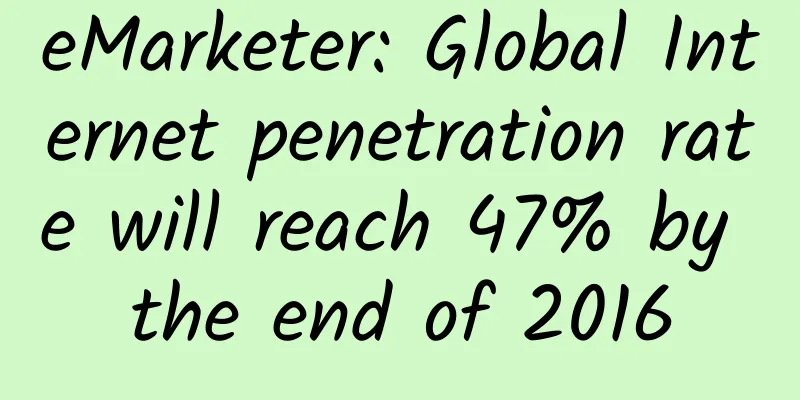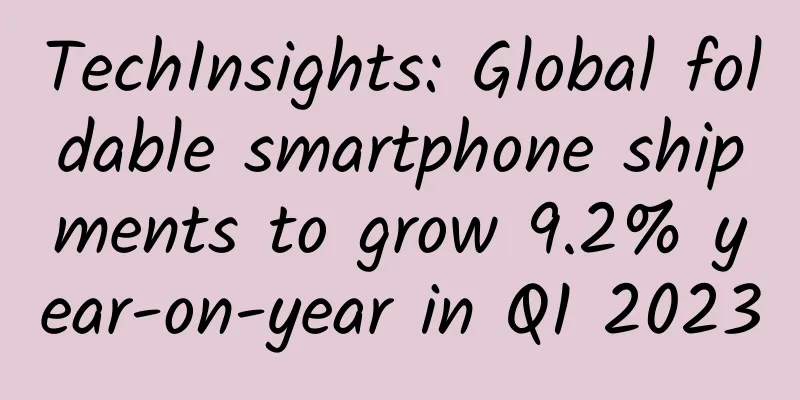eMarketer: Global Internet penetration rate will reach 47% by the end of 2016

|
199IT original compilation By the end of 2016, nearly 47% of the world's population accessed the Internet, via PC, laptop or mobile device, an annual growth rate of 6.8%. eMarketer predicts that by 2018, the Internet penetration rate will exceed 50%, when 51% of the world's population will access the Internet, equivalent to 3.82 billion people. According to a new eMarketer report, "Global Mobile Users and the Internet: eMarketer's Forecast for 2016," the Internet markets in North America and Western Europe have matured, while consumers in developing countries in Asia Pacific, Latin America, Central and Eastern Europe, the Middle East and Africa are accessing the Internet for the first time through mobile broadband and mobile devices. This year, more than 72% of Internet users worldwide use mobile phones to access the Internet, an annual increase of 11.9%, with the most significant growth in the Middle East and Africa, followed closely by Latin America. Instant messaging services and social media are the driving forces of mobile Internet use, especially in developing countries. The rapid popularity of WeChat, WhatsApp and Facebook Messenger reflects the important role that mobile Internet has played in daily life. Even though messaging has become the primary way for people to keep in touch with family and friends, in some areas this method is cheaper than making calls and sending text messages. eMarketer raised its forecast for the number of Internet users worldwide, mainly due to significant growth in the Asia-Pacific region, especially in China and India. Smartphone adoption will continue to maintain double-digit growth in 2016, reaching 2.1 billion people, accounting for 28.7% of the world's population, and smartphone penetration will soon surpass feature phones. eMarketer predicts that 47.7% of mobile phone users worldwide will use smartphones this year, and this index will exceed 50% by 2017. In the next two years, cheap, low-end smartphones will drive smartphone adoption, especially in developing countries such as India, Indonesia, the Philippines, South Africa, Nigeria, Turkey, Brazil, Peru, Mexico and Vietnam. Moreover, although the number of tablet users increased by 12.2% in 2016, the growth rate was significantly slower than in the past two years. According to IDC's survey, global tablet shipments fell by 10.1% in 2015. At the same time, IDC data showed that smartphone shipments increased by 10.1% during the same period. Large-screen smartphones put pressure on tablet growth, and cheap smartphones further weakened tablet sales in emerging countries, both in developed and developing countries. eMarketer predicts that by the end of 2016, 15% of the world's population will use tablets, and by 2020, the growth rate will only be 19.2%. eMarketer lowered its forecast for the number of tablet users, mainly due to data showing the impact of the number of tablet users in China. 199IT.com Originally compiled from: eMarketer. Please do not reprint without authorization |
<<: China Mobile: China Mobile Terminal Big Data
Recommend
Why does drinking chrysanthemum tea cause diarrhea? Types of chrysanthemum tea
Chrysanthemum tea is the buds of chrysanthemums. ...
Causes of stomach pain and diarrhea during breastfeeding
Symptoms such as stomach pain and diarrhea that o...
What causes follicle development to stop?
Some people hope that their world of two will tur...
Can I eat cereal while breastfeeding?
Oatmeal is a food that we eat very often. The fat...
Are you afraid of "anesthesia"? Will general anesthesia make people stupid?
Hello everyone, many people don’t know much about...
What to do if menopause comes early? These tasks need to be done
If you find that menopause comes significantly ea...
The discharge has a fishy smell
Secretion refers to a secretion from the female p...
15 days after clamping, there is brown blood in the vaginal discharge
Many women who are pregnant but do not want to be...
Will eating tiramisu cake in the morning make you fat? What category does tiramisu belong to?
Tiramisu is an Italian dessert with a coffee wine...
What to do if pregnant women sometimes have difficulty breathing
After pregnancy, many women's bodies show abn...
Will staying up late affect the menstrual cycle?
Many people need to stay up late for long periods...
What does follicle stimulating hormone mean?
Follicle-stimulating hormone is usually tested am...
Treatment of vaginal inflammation, Chinese medicine remedies have methods
Vaginitis is a common gynecological disease among...
What are the advantages and disadvantages of sweating during confinement?
In daily life, more and more women pay attention ...
Nursing for premature rupture of membranes
The fetal membrane is an important tissue that pr...









